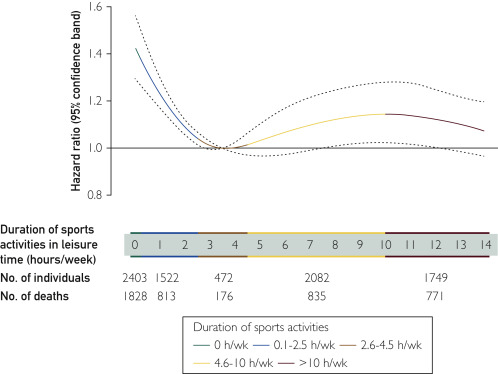
Learn how to lift weights by reading this article. This article will show you how to improve your form, strength, and endurance. Try lifting lighter weights in the beginning. After you've mastered the technique, it is possible to increase your weight. You want to be in perfect form when you lift weights. Beginners should start with light weights. As your confidence grows, you can gradually increase your reps.
Once you have mastered your technique, you'll be able to increase the weight. Begin by using a lighter weight than you would usually use. As you get stronger, you can increase the weight. You'll be able do more repetitions using heavier weights. Keep track of your progress, and record what you do at the gym. You can also log your workouts on your phone or a fitness app.

Pick weights that you can comfortably perform 80% of the reps with good form. You should find the last 20% challenging. As you work towards your goals, it is best to begin with a low weight and then increase your weight gradually. Remember to rest for as long as you can. You should do this as a beginner to avoid injury. You'll want to make sure you're able to complete the reps safely and correctly. By following these tips, you'll be on your way to lifting heavy and gaining strength.
Before you begin any new exercise regimen, consult your doctor. Weightlifting can be a great way for strength building, no matter your level of experience. Just remember to follow these tips to keep you safe while building your muscles. We have tips for you to get started lifting weights and to keep you in good shape. For beginners, this is how to lift heavy weights.
o Be sure to warm up before lifting heavy weights. Many new weight lifters overestimate their abilities and risk getting injured. Start small and increase weight only if your form is good. Start with light, medium, or heavy weights for beginners. As you gain experience, increase your weight gradually. Your fitness will improve the more you train.

o Select the weights that are right for you. The weight room can be intimidating for beginners. Don't worry! These tips will help prevent injuries and build muscle. You must choose the weight that is right for you before lifting heavyweights. You can improve your posture by doing this. The second step to lifting heavyweights is learning proper form.
FAQ
How do you measure body fat?
A Body Fat Analyzer is the best way to measure body weight. These devices are used to measure body fat for people who want weight loss.
What should my weight be for my age and height? BMI calculator and chart
To determine how much weight loss you need, a BMI calculator is your best friend. A healthy BMI range should be between 18.5 and 24,000. Weight loss is possible if you aim to lose approximately 10 pounds per week. Enter your height and weight to calculate your BMI.
This BMI chart will help you determine if your body is overweight or obese.
What is the difference in fat and sugar?
Fat is an energy source that comes directly from food. Sugar is a sweet, naturally occurring substance in fruits and vegetables. Both fats and sugars provide the same number of calories. However, fats contain more than twice as many calories as sugars.
Fats can be stored in the body, which can lead to obesity. They can cause cholesterol buildup, which can lead you to heart attacks and strokes.
Sugars provide instant energy and are rapidly absorbed by the body. This causes blood sugar levels to rise. High blood glucose levels can pose a danger because they increase the chance of developing type II Diabetes.
Statistics
- This article received 11 testimonials and 86% of readers who voted found it helpful, earning it our reader-approved status. (wikihow.com)
- Extra virgin olive oil may benefit heart health, as people who consume it have a lower risk for dying from heart attacks and strokes according to some evidence (57Trusted Source (healthline.com)
- The Dietary Guidelines for Americans recommend keeping added sugar intake below 10% of your daily calorie intake, while the World Health Organization recommends slashing added sugars to 5% or less of your daily calories for optimal health (59Trusted (healthline.com)
- WHO recommends consuming less than 5% of total energy intake for additional health benefits. (who.int)
External Links
How To
What does the word "vitamin" mean?
Vitamins are organic compounds found naturally in food. Vitamins aid us in absorbing nutrients from the food we eat. Vitamins cannot be made by the body; they must be taken from food.
There are two types vitamins: water soluble or fat soluble. Water soluble vitamins dissolve easily in water. These include vitamin C (thiamine), Vitamin B1 (riboflavin), Vitamin B2 (riboflavin), Vitamin B3 (niacin), Vitamin B6 (pyridoxine), Vitamin C, B1 (thiamine), Vitamin B2 (riboflavin), Vitamin B3 (niacin), and Vitamin B6 (pyridoxine). Fat soluble vitamins are stored in the liver and fatty tissue. You can find vitamin D, E K, A, beta carotene, and other fat-soluble vitamins.
Vitamins are classified according their biological activity. There are eight major categories of vitamins.
-
A - essential for normal growth and maintenance of health.
-
C - important for proper nerve function and energy production.
-
D – Essential for healthy teeth, bones and joints
-
E - Required for good vision & reproduction
-
K – Required for healthy nerves & muscles.
-
P - Vital for strong bones and teeth.
-
Q - Aids digestion and iron absorption
-
R - necessary for making red blood cells.
The recommended daily intake (RDA), of vitamins varies with age, gender and physical condition. The U.S. Food and Drug Administration (FDA) sets the RDA values.
For example, the RDA for vitamin A is 400 micrograms per dayfor adults 19 years or older. For fetal development, pregnant women need 600 mg per day. Children ages 1-8 require 900 micrograms per day. Children under 1 year old require 700 micrograms daily, while infants over one year old need 500 micrograms every day. This decreases between 9 and 12 months.
Children aged between 1-18 years require 800 micrograms of sugar per day, while overweight children need 1000 micrograms. Children who are underweight receive 1200 micrograms every day to meet their nutritional requirements.
Children ages 4-8 years who have been diagnosed with anemia need 2200 micrograms per day of vitamin C.
2000 micrograms daily is required for adults over 50 to maintain their general health. Breastfeeding or pregnant women require 3000 micrograms per daily due to higher nutrient demands.
1500 micrograms is the recommended daily intake for adults aged 70+, who lose approximately 10% of muscle each year.
Women who are pregnant and lactating need more nutrients than the RDA. Pregnant and breastfeeding women require 4000 micrograms each day during pregnancy and 2500 Micrograms each day after delivery. Breastfeeding mothers need 5000 mg per day when breastmilk is being produced.